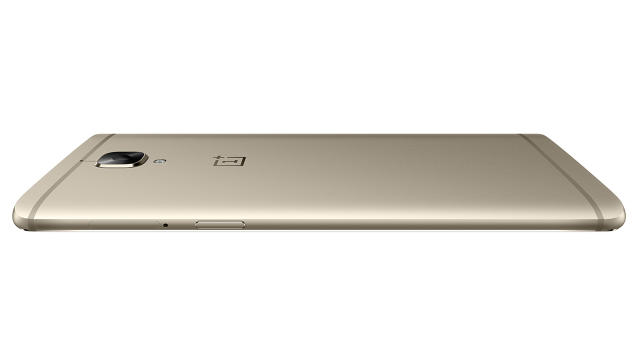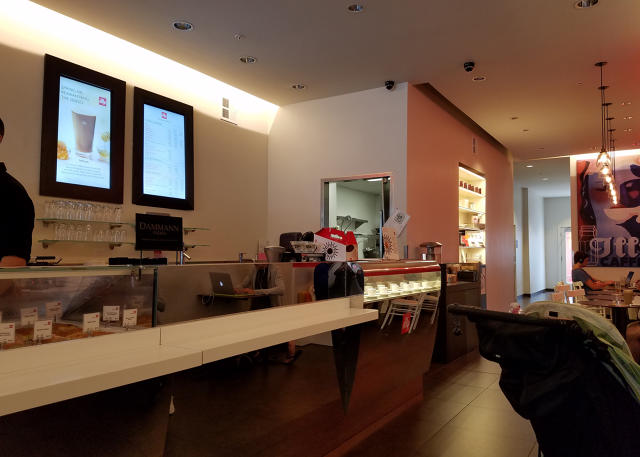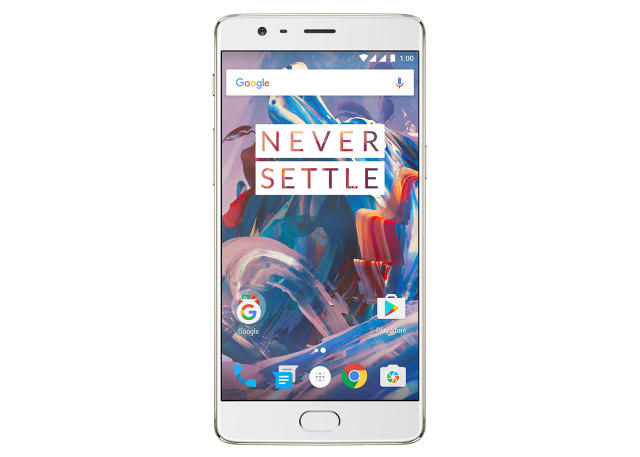The OnePlus 3 Is A Shot Across The Bow Of Expensive Premium Phones
Smartphones are looking and acting very much the same these days. So the smart play might be to create phones that look, feel, and act like a premium phone—yet cost well below $500.
Actually that’s always been the strategy of the Chinese smartphone maker OnePlus, and the company’s $399 OnePlus 3 Android phone is the newest example. The phone has a powerful processor, ample memory, a sharp display, some original and thoughtful features—and then there’s that price tag.

Design
If you like large, sleek aluminum slabs of phone, you might think the OnePlus 3 is dead sexy. That was my first impression of the device (and second, and third). The phone costs hundreds less than Samsung’s Galaxy S7 and the iPhone 6s, yet you could argue that the OnePlus 3 is the best-looking of the three. It’s also true that if you look closely at the OnePlus 3, you can find design themes similar to the S7 (the subtle curves on the back) and iPhone 6s (the graphite color and feel of the metal, the whole bottom of the phone).
The OnePlus 3 also includes one of my favorite features from earlier OnePlus phones—the switch on the side that allows you to shut off or limit notifications to only the most important.

Hot Specs
Under the hood, the OnePlus 3 keeps up the tradition of impressive specs for the money, with a quad-core Snapdragon 820 processor, 6 GB of RAM, 64 GB of storage, and a bare-bones version of Android 6.0 called OxygenOS. The result of all this a very fast and responsive interface, and the feel of lots of horsepower in reserve to burn if needed.
OnePlus says the phone performs tasks 35% faster than its predecessor, the OnePlus 2, and features a 40% boost in graphical power. I didn’t benchmark test these claims, but based on what I saw in casual use over a few days they sound truthy.
Fast Charging
One of the first things OnePlus cofounder Carl Pei told me about the phone is how fast it charges. His company has a new technology called DASH that puts the charging regulator in the adapter that plugs into the wall instead of inside the phone. Pei says the reasons phones charge slowly is that they can feed electricity into the battery only as quickly as the regulator can disperse the heat created inside the phone. Having the whole AC-to-DC conversion take place outside the phone makes heat dispersion easier and quicker.
Pei told me that using the USB-C DASH charger the phone will charge to 30% in 15 minutes. I found this to be true in my tests. You can also keep charging while you’re streaming video or playing games on the phone.
Photo Challenge
The place where I thought OnePlus might fall down versus its more expensive competitors is the camera. The company didn’t set out to make the best smartphone camera on the market, but one that’s “competitive” with those from Samsung and Apple, as Pei put it. For my money, the OnePlus camera is indeed competitive.
The Galaxy S7 camera is very, very good—the best I’ve used on a smartphone—and I could see some differences in the test photos shot with that camera and the same shots taken (with comparable camera settings) using the OnePlus 3. The OnePlus 3 photos looked a bit brighter than the S7 shots, but they also looked a bit washed out in places. The S7 images looked more natural and balanced, by comparison. In terms of detail and clarity of objects in medium light, the S7 may have a slight edge, but the OnePlus 3 performed well. Are those advantages in the S7 worth a couple hundred dollars more? That depends on the buyer.


The OnePlus 3 uses a 16-megapixel sensor made by Sony. Pei said the camera uses both Optical Image Stabilization (OiS) and Electronic Image Stabilization (EiS) to combat shaky hands syndrome. A face-detection auto-focus feature is always on, searching for faces to lock onto. The OnePlus 3 camera’s HD mode, which can be turned off and on by the user, takes four photos at once and stitches the best parts of each together.
The eight-megapixel front camera takes a picture when you smile at it. This worked reliably in my tests. The feature could be helpful because having to push a button to take the shot sometimes shakes the phone.
The OnePlus is sold as an unlocked phone that works—in the U.S.—on AT&T and T-Mobile, using a nano SIM you provide. There’s a second SIM slot, nice for people who regularly cross country, and networks and borders. The phone also contains an NFC chip in case you want to try Android Pay for mobile payments.

The Display
The 5.5-inch super AMOLED display rendered images and video colorfully and clearly, although perhaps not quite so colorfully or clearly as the Samsung Galaxy S7’s display. That’s probably because the S7 display is 1,440-by-2,560 pixels, while OnePlus decided to stick with a 1,080-by-1,920 pixel display.
The OnePlus 3 display is more than enough for my viewing pleasure, but it may be lacking for the demands of virtual reality systems like Google’s Daydream. The only reference phone Google has recommended to developers for use with Daydream VR is its own Nexus 6P. The Nexus 6P uses a 5.7-inch, 1,440-by-2,560 pixel Samsung display with QHD resolution. The OnePlus display’s pixel density is 401 pixels per inch (ppi) while the Nexus phone’s screen is 518 ppi. Samsung’s S7 display is roughly 534 ppi.
Then again, the Nexus 6P, the best Android phone on the market for my money, costs $150 more than the OnePlus 3. Worth it? Honestly, all things considered (including price), choosing between the Nexus 6P and the OnePlus 3 would be a tough choice.
Keeping Costs Low
The OnePlus 3 doesn’t have the wireless charging option offered by the Galaxy S7, but until the S7 lets me charge my phone wire-free from across the room, I don’t care. The charging pads you have to use now just creates another cable on my desk. Nor does the OnePlus 3 offer a waterproof rating. But these are probably just examples of deluxe features OnePlus passed on to keep the phone under $400.
One of the ways OnePlus has been able to sell phones with robust specs at midrange prices is by selling direct and carefully ordering just enough component parts and finished phones to fulfill demand. Some phone makers, such as Nextbit, have done this by selling on crowdfunding platforms like Kickstarter. With previous phones, OnePlus chose to do it through it own invite system. But the invites weren’t available to many would-be OnePlus 2 buyers, which caused some brand angst, so OnePlus has now done away with the invite system and anybody can go to the OnePlus site and order a phone.
Overall, I found little to dislike about OnePlus’s new phone. I believe OnePlus is growing up as a smartphone maker, and that this is apparent in surprisingly mature devices like the OnePlus 3. The company is still holding on to its upstart attitude, which you can sense when talking to the very no-nonsense Pei. The company is serious about taking the floor out from underneath premium phone makers like HTC and Samsung.
And maybe the world is changing. After using the OnePlus 3 for awhile, I wonder if the future will have any room for the hype, high price tags, and fat margins of the premium smartphone business we know today.
Fast Company , Read Full Story
(16)


